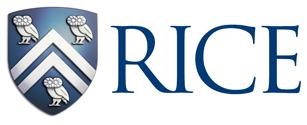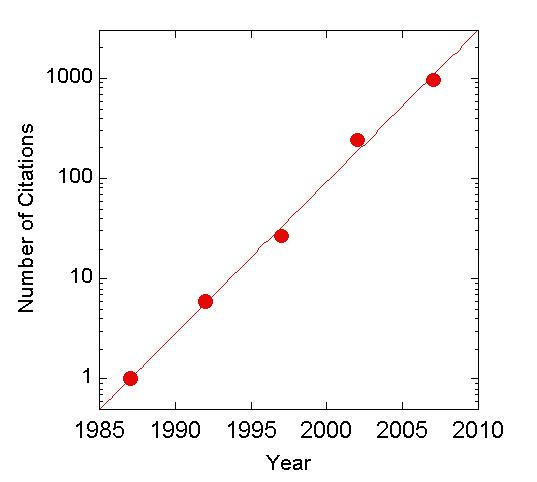Team:Rice University/BACKGROUND
From 2008.igem.org
DavidOuyang (Talk | contribs) (→References) |
(→History of Resveratrol) |
||
| (49 intermediate revisions not shown) | |||
| Line 9: | Line 9: | ||
|align="center" style="background:#C0C0C0"| <BR> | |align="center" style="background:#C0C0C0"| <BR> | ||
[[Image:ProjectTitle.jpg]]<BR> | [[Image:ProjectTitle.jpg]]<BR> | ||
| - | + | [[Team:Rice_University/OUR TEAM|OUR TEAM]] ::: [[Team:Rice_University|SUMMARY]] ::: [[Team:Rice_University/BACKGROUND|BACKGROUND]] ::: | |
| - | [[Team:Rice_University|SUMMARY]] ::: [[Team:Rice_University/BACKGROUND|BACKGROUND]] ::: [[Team:Rice_University/STRATEGY|STRATEGY]] ::: | + | [[Team:Rice_University/STRATEGY|STRATEGY]] ::: [[Team:Rice_University/CONSTRUCTS|CONSTRUCTS]] ::: [[Team:Rice_University/RESULTS|RESULTS]] ::: [[Team:Rice_University/CONCLUSIONS|ONGOING WORK]] |
{| style="color:#1b2c9a;background-color:#FFFFFF;" cellpadding="0" cellspacing="0" border="0" bordercolor="#000" width="100%" align="center"|} | {| style="color:#1b2c9a;background-color:#FFFFFF;" cellpadding="0" cellspacing="0" border="0" bordercolor="#000" width="100%" align="center"|} | ||
| Line 19: | Line 19: | ||
=== '''History of Resveratrol''' === | === '''History of Resveratrol''' === | ||
| - | [[Image:trans-resveratrol.jpg| | + | [[Image:trans-resveratrol.jpg|left|frame|none|trans-Resveratrol]] |
| - | In 1940, | + | In 1940, resveratrol was identified as the active component in ''Cassia quniquangulata'' (cinnamon) extract and was shown to be responsible for the anti-inflammatory properties of ''Polygonum cuspidatum'' root, which is used in traditional Chinese and Japanese medicine [1]. Since then, studies have shown that resveratrol is a member of a class of compounds called phytoalexins, which plants use as a defense mechanism against pathogens [2]. Grapes and several types of berries, including blueberries, bilberries, and cranberries, produce appreciable levels of resveratrol, and thus the main sources of resveratrol in the human diet are wine and juices [3]. The discovery of resveratrol in wine [4] implicated a role for this compound in the “French Paradox," the observation that the French exhibit a relatively low rate of cardiovascular disease although their diet is high in saturated fats. |
| - | + | ||
| - | + | ||
| - | + | ||
==='''Health Benefits of Resveratrol''' === | ==='''Health Benefits of Resveratrol''' === | ||
| - | [[Image:RSV.jpg| | + | [[Image:RSV.jpg|right|thumb|300px|History of Resveratrol Citatitions on PubMed ]] |
| - | A PubMed search for “resveratrol” | + | A PubMed search for “resveratrol” indicates that scientific interest in the health benefits of this phytoalexin is growing exponentially. To date, a diverse array of health benefits have been associated with resveratrol, including: |
| - | |||
| - | <B>1. Improved insulin sensitivity.</B> Resveratrol has been shown as a potent therapeutic for type 2 diabetes [ | + | <B>1. Improved insulin sensitivity.</B> Resveratrol has been shown as a potent therapeutic for type 2 diabetes [5]. Pharmaceuticals based on resveratrol-like compounds for the treatment of diabetes are currently in Phase I clinical trials [6]. |
| - | <B>2. | + | <B>2. Inhibition of carcinogenesis.</B> Resveratrol induces cell death specifically in cancerous cells. This property has been demonstrated for a variety of cancers, including colon [7-9], pancreatic [10], prostate [11,12], breast [13,14], and skin [15,16] cancers. Several ongoing Phase I human clinical trials are investigating the use of resveratrol as a cancer therapy [17,18] |
| - | <B>3. Extended lifespan.</B> Resveratrol mimics the effects of caloric restriction in mammals and has been shown to extend lifespans in invertebrates [ | + | <B>3. Extended lifespan.</B> Resveratrol mimics the effects of caloric restriction in mammals and has been shown to extend lifespans in invertebrates [19,20], and a fish model [21]. In addition, resveratrol reduces the genetic changes associated with aging in a mammalian mouse model [22-24]. PGC-1alpha levels were decreased threefold by induction of genes for oxidative phosphorylation and mitochondrial biogenesis in wt SIRT1 mice but no change in SIRT1(-/-) MEFs [25]. |
| - | <B>4. Improved cardiovascular function.</B> Resveratrol exhibits cardioprotective effects, such as | + | <B>4. Improved cardiovascular function.</B> Resveratrol exhibits cardioprotective effects, such as suppression of atherosclerosis, inhibition of platelet aggregation, promotion of vasorelaxation, and modulation of triglyceride blood levels [22,26-28]. |
| - | <B>5. Reduced Neurodegeneration.</B> Mouse models of Alzheimer's and Parkinson's disease have provided evidence that resveratrol functions as a protective agent against degenerative neural diseases[ | + | <B>5. Reduced Neurodegeneration.</B> Mouse models of Alzheimer's and Parkinson's disease have provided evidence that resveratrol functions as a protective agent against degenerative neural diseases [29,30]. In addition, experiments with rats, mice, and gerbils show that resveratrol administration protects against brain damage following ischemic stroke [31-33]. |
| - | + | The biochemical origin of the diverse pharmacological effects of resveratrol is not completely understood, but a variety of mechanisms have been proposed for the molecule's action [3]. | |
| - | + | <BR> | |
=== '''Rationale for Creating Resveratrol-Enriched Beer''' === | === '''Rationale for Creating Resveratrol-Enriched Beer''' === | ||
| Line 48: | Line 44: | ||
[[Image:brewing.jpg|left]] | [[Image:brewing.jpg|left]] | ||
| - | |||
| - | |||
| - | |||
| - | + | One of the best sources of resveratrol is wine, with red wine having concentrations ranging from 0.1 to 14.3 mg/L and white wine having concentrations ranging from <0.1 to 2.1 mg/L [3]. Beer is also predicted to contain resveratrol, albeit at lower levels than wine, since hops contains low levels of resveratrol (0.5 to 1 µg/g) [3]. Because beer is more popular in the United States than wine [34], many people consuming alcoholic beverages do not gain the full health benefits of dietary resveratrol. To increase the level of resveratrol present in beer and provide these health benefits for a wider populace, we are working to engineer a brewer’s yeast that synthesizes resveratrol from tyrosine. Like wine, beer is produced under fermentative conditions, and we anticipate that production of resveratrol in beer using our engineered yeast will be an effective method for avoiding air oxidation and inactivation of resveratrol. In addition, we propose that brewer's yeast represents an excellent approach for synthesizing air sensitive prophylactics in beer for widespread and affordable delivery to consumers. | |
| - | + | ||
| - | + | ||
| - | + | ||
| - | + | <BR><BR> | |
==='''References''' === | ==='''References''' === | ||
| - | 1: Samuel SM, et al. Akt/FOXO3a/SIRT1-mediated cardioprotection by n-tyrosol against ischemic stress in rat in vivo model of myocardial infarction: switching gears toward survival and longevity. J Agric Food Chem. 2008 Oct 22;56(20):9692-8 | + | <h6> |
| - | + | 1: Takaoka, M. J. Of the phenolic substances of white hellebore (Veratrum grandiflorum Loes. Fil.) J. Faculty Sci. Hokkaido Imperial University. 1940; 3: 1-16. | |
| - | + | <BR> | |
| - | muscle cells. | + | 2. Hammerschmidt, R. PHYTOALEXINS:What Have We Learned After 60 years. Annu. Rev. Phytopathol. 1999; 37:285–306 |
| - | Genes Nutr. 2008 Feb;2(4):323-6. | + | <BR> |
| - | + | 3. Baur, J. A. and Sinclair, D. A. Therapeutic potential of resveratrol: the in vivo evidence. Nature Reviews Drug Discovery. 2006; 5: 493-506. | |
| - | + | <BR> | |
| - | + | 4. Renaud, S. and Gueguen, R. The French Paradox and wine drinking. Novartis Found. Sympos. 1998; 216:208-217. | |
| - | stimulates human platelet nitric oxide production. | + | <BR> |
| + | 5. Milne JC, et al. Small molecule activators of SIRT1 as therapeutics for the treatment of type 2 diabetes. Nature. 2007 Nov 29;450(7170):712-6. | ||
| + | <BR> | ||
| + | 6. http://www.sirtrispharma.com/pipeline-SRT501.html | ||
| + | <BR> | ||
| + | 7. Juan ME, et al. Resveratrol induces apoptosis through ROS-dependent mitochondria pathway in HT-29 human colorectal carcinoma cells. J Agric Food Chem. 2008 Jun 25;56(12):4813-8. Epub 2008 Jun 4. | ||
| + | <BR> | ||
| + | 8. Saiko P, et al. Novel resveratrol analogs induce apoptosis and cause cell cycle arrest in HT29 human colon cancer cells: inhibition of ribonucleotide reductase activity. Oncol Rep. 2008 Jun;19(6):1621-6. | ||
| + | <BR> | ||
| + | 9. Marel AK, et al. Inhibitory effects of trans-resveratrol analogs molecules on the proliferation and the cell cycle progression of human colon tumoral cells. Mol Nutr Food Res. 2008 May;52(5):538-48. | ||
| + | <BR> | ||
| + | 10. Bernhaus A, et al. Antitumor effects of KITC, a new resveratrol derivative, in AsPC-1 and BxPC-3 human pancreatic carcinoma cells. Invest New Drugs. 2008 Oct 8. [Epub ahead of print] | ||
| + | <BR> | ||
| + | 11. Seeni A, et al. Suppression of Prostate Cancer Growth by Resveratrol in The Transgenic Rat for Adenocarcinoma of Prostate (TRAP) Model. Asian Pac J Cancer Prev. 2008 Jan-Mar;9(1):7-14. | ||
| + | <BR> | ||
| + | 12. Horvath Z, et al. Novel resveratrol derivatives induce apoptosis and cause cell cycle arrest in prostate cancer cell lines. Anticancer Res. 2007 Sep-Oct;27(5A):3459-64. | ||
| + | <BR> | ||
| + | 13. Filomeni G, et al. trans-Resveratrol induces apoptosis in human breast cancer cells MCF-7 by the activation of MAP kinases pathways. Genes Nutr. 2007 Dec;2(3):295-305. Epub 2007 Oct 18. | ||
| + | <BR> | ||
| + | 14. Schlachterman A, et al. Combined resveratrol, quercetin, and catechin treatment reduces breast tumor growth in a nude mouse model. Transl Oncol. 2008 Mar;1(1):19-27. | ||
| + | <BR> | ||
| + | 15. Jang M, Cai L, et al. Cancer chemopreventive activity of resveratrol, a natural product derived from grapes. Science. 1997 Jan 10;275(5297):218-20. | ||
| + | <BR> | ||
| + | 16. van Ginkel PR, et al. Resveratrol inhibits uveal melanoma tumor growth via early mitochondrial dysfunction. Invest Ophthalmol Vis Sci. 2008 Apr;49(4):1299-306. | ||
| + | <BR> | ||
| + | 17. http://www.clinicaltrials.gov/ct/show/NCT00256334 | ||
| + | <BR> | ||
| + | 18. http://www.cancer.gov/clinicaltrials/CCUM-2004-0535 | ||
| + | <BR> | ||
| + | 19. Howitz KT, et al. Small molecule activators of sirtuins extend Saccharomyces cerevisiae lifespan. Nature. 2003 Sep 11;425(6954):191-6. Epub 2003 Aug 24. | ||
| + | <BR> | ||
| + | 20. Wood JG, et al. Sirtuin activators mimic caloric restriction and delay ageing in metazoans. Nature. 2004 Aug 5;430(7000):686-9. | ||
| + | <BR> | ||
| + | 21. Valenzano DR, et al. Resveratrol prolongs lifespan and retards the onset of age-related markers in a short-lived vertebrate. Curr Biol. 2006 Feb 7;16(3):296-300. | ||
| + | <BR> | ||
| + | 22. Barger JL, et al. A low dose of dietary resveratrol partially mimics caloric restriction and retards aging parameters in mice. PLoS ONE. 2008 Jun 4;3(6):e2264. | ||
| + | <BR> | ||
| + | 23. Kode A, et al. (2007). "Resveratrol induces glutathione synthesis by activation of Nrf2 and protects against cigarette smoke-mediated oxidative stress in human lung epithelial cells". Am J Physiol Lung Cell Mol Physiol. | ||
| + | <BR> | ||
| + | 24. Baur JA, et al. Resveratrol improves health and survival of mice on a high-calorie diet. Nature. 2006 Nov 16;444(7117):337-42. Epub 2006 Nov 1. | ||
| + | <BR> | ||
| + | 25. M . Lagouge , C . Argmann , Z . Gerhart-Hines , H . Meziane , C . Lerin , F . Daussin , N . Messadeq , J . Milne , P . Lambert , P . Elliott. Resveratrol Improves Mitochondrial Function and Protects against Metabolic Disease by Activating SIRT1 and PGC-1α . Cell , Volume 127 , Issue 6 , Pages 1109 - 1122 | ||
| + | <BR> | ||
| + | 26. Samuel SM, et al. Akt/FOXO3a/SIRT1-mediated cardioprotection by n-tyrosol against ischemic stress in rat in vivo model of myocardial infarction: switching gears toward survival and longevity. J Agric Food Chem. 2008 Oct 22;56(20):9692-8. | ||
| + | <BR> | ||
| + | 27. Hwang JT, et al. Resveratrol protects ROS-induced cell death by activating AMPK in H9c2 cardiac muscle cells. Genes Nutr. 2008 Feb;2(4):323-6. | ||
| + | <BR> | ||
| + | 28. Gresele P, et al. Resveratrol, at concentrations attainable with moderate wine consumption, stimulates human platelet nitric oxide production. | ||
J Nutr. 2008 Sep;138(9):1602-8. | J Nutr. 2008 Sep;138(9):1602-8. | ||
| - | + | <BR> | |
| - | + | 29. Kim D, et al. SIRT1 deacetylase protects against neurodegeneration in models for Alzheimer's disease and amyotrophic lateral sclerosis. EMBO J. 2007 Jul 11;26(13):3169-79. Epub 2007 Jun 21. | |
| - | + | <BR> | |
| - | + | 30. Jin F, et al. Neuroprotective effect of resveratrol on 6-OHDA-induced Parkinson's disease in rats. Eur J Pharmacol. 2008 Oct 10. [Epub ahead of print] | |
| - | + | <BR> | |
| - | + | 31. Sinha K, et al. Protective effect of resveratrol against oxidative stress in middle cerebral artery occlusion model of stroke in rats. Life Sci. 2002 Jun 28;71(6):655-65. | |
| - | + | <BR> | |
| - | + | 32. Inoue H, et al. Brain protection by resveratrol and fenofibrate against stroke requires peroxisome proliferator-activated receptor alpha in mice. Neurosci Lett. 2003 Dec 11;352(3):203-6. | |
| - | + | <BR> | |
| - | + | 33. Wang Q, et al. Resveratrol protects against global cerebral ischemic injury in gerbils. Brain Res. 2002 Dec 27;958(2):439-47. | |
| - | + | <BR> | |
| - | + | 34. http://www.gallup.com/poll/109066/Beer-Back-DoubleDigit-Lead-Over-Wine-Favored-Drink.aspx | |
| - | + | </h6> | |
| - | + | |}[[Team:Rice_University/OUR TEAM|OUR TEAM]] ::: | |
| - | + | [[Team:Rice_University|SUMMARY]] ::: [[Team:Rice_University/BACKGROUND|INTRODUCTION]] ::: [[Team:Rice_University/STRATEGY|STRATEGY]] ::: [[Team:Rice_University/RESULTS|RESULTS]] ::: [[Team:Rice_University/CONCLUSIONS|ONGOING WORK]] | |
| - | + | ||
| - | + | ||
| - | + | ||
| - | + | ||
| - | + | ||
| - | + | ||
| - | + | ||
| - | + | ||
| - | + | ||
| - | + | ||
| - | + | ||
| - | + | ||
| - | + | ||
| - | + | ||
| - | + | ||
| - | + | ||
| - | + | ||
| - | + | ||
| - | + | ||
| - | + | ||
| - | + | ||
| - | + | ||
| - | + | ||
| - | + | ||
| - | + | ||
| - | + | ||
| - | + | ||
| - | + | ||
| - | + | ||
| - | + | ||
| - | + | ||
| - | + | ||
| - | + | ||
| - | + | ||
| - | + | ||
| - | + | ||
| - | + | ||
| - | + | ||
| - | + | ||
| - | + | ||
| - | + | ||
| - | + | ||
| - | + | ||
| - | + | ||
| - | + | ||
| - | + | ||
| - | + | ||
| - | + | ||
| - | + | ||
| - | + | ||
| - | + | ||
| - | + | ||
| - | + | ||
| - | EMBO J. 2007 Jul 11;26(13):3169-79. Epub 2007 Jun 21. | + | |
| - | + | ||
| - | + | ||
| - | + | ||
| - | Eur J Pharmacol. 2008 Oct 10. [Epub ahead of print] | + | |
| - | + | ||
| - | + | ||
| - | + | ||
| - | artery occlusion model of stroke in rats. | + | |
| - | Life Sci. 2002 Jun 28;71(6):655-65. | + | |
| - | + | ||
| - | + | ||
| - | + | ||
| - | peroxisome proliferator-activated receptor alpha in mice. | + | |
| - | Neurosci Lett. 2003 Dec 11;352(3):203-6. | + | |
| - | + | ||
| - | + | ||
| - | + | ||
| - | Brain Res. 2002 Dec 27;958(2):439-47. | + | |
| - | + | ||
| - | + | ||
| - | + | ||
| - | + | ||
| - | + | ||
| - | + | ||
| - | + | ||
| - | + | ||
| - | + | ||
| - | + | ||
| - | + | ||
| - | + | ||
| - | + | ||
| - | + | ||
| - | + | ||
| - | + | ||
| - | + | ||
| - | + | ||
| - | + | ||
| - | + | ||
| - | + | ||
| - | + | ||
| - | + | ||
| - | + | ||
| - | + | ||
| - | |} | + | |
| - | [[Team:Rice_University| | + | |
|} | |} | ||
Latest revision as of 05:00, 30 October 2008
|
SUMMARY ::: INTRODUCTION ::: STRATEGY ::: RESULTS ::: ONGOING WORK |
 "
"





